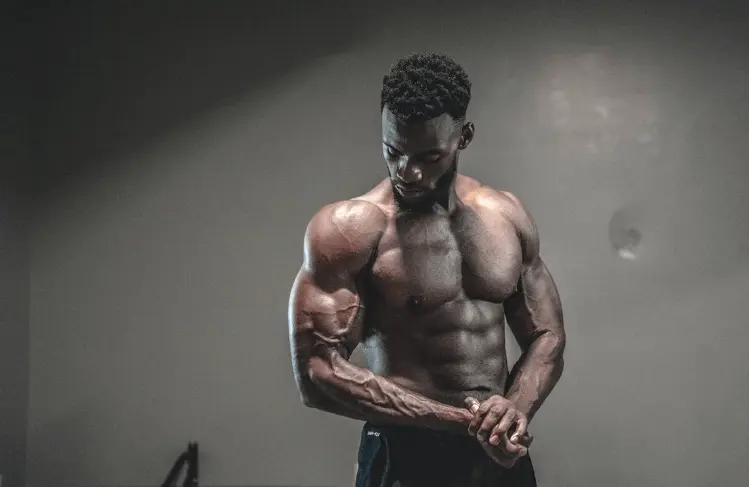Introduction
You must have strong shoulders to lift, push, and pull safely. Gaining shoulder strength entails working out many muscles from different angles. In many exercises and daily tasks, the front of your shoulder, particularly the anterior deltoid, takes center stage.
The anterior deltoid, for example, is vital for raising your arms in front of you and also for pushing actions like the bench press. Strengthening the middle and posterior deltoids is also important.
In actions such as walking or pulling a lawn mower cord, the middle deltoid lifts your arms to the sides, and the posterior deltoid stretches your humerus behind you.
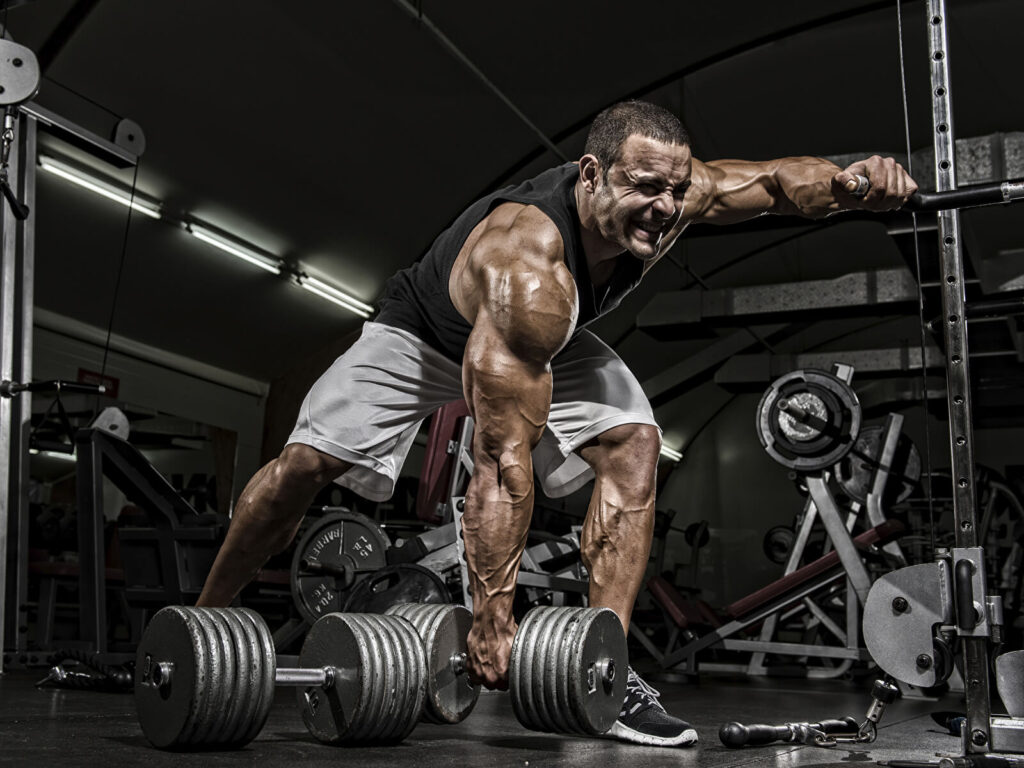
The posterior deltoid also aids in externally rotating your shoulders, such as when you make the “I don’t know” sign by turning your hands out.
These muscles all work together to keep your shoulders steady while carrying heavy shopping bags with your arms at your sides. On the other hand, the rear deltoids may be tough to target in the gym.
Muscle Anatomy of the Shoulder
Your shoulder is made up of the deltoid and rotator cuff muscles. The deltoid muscle is the meaty part of your shoulder that defines itself.
The rotator cuff stabilizes the shoulder joint, which is important because it is the body’s most mobile joint. This mobility is advantageous because it allows you to move your arm in a number of ways, but it is also disadvantageous because it makes it more prone to damage. That is why strengthening these muscles is crucial.
How Do Your Delts Appear?
“Your deltoids help you lift your arm in front of you, out to the side, overhead, and behind you,” says Beachbody fitness coach Cody Braun.
While most people consider “the deltoid” to be a single muscle, it actually has three different components, or heads: the front (anterior), center (lateral), and back (posterior).
Although the three heads never work independently, particular workouts may highlight which fibers work the hardest. However, in order to obtain a well-rounded shoulder, you must ensure that each head is sufficiently emphasized.
Regular activities such as lifting and pushing objects help both men and women develop their front deltoid muscles. According to Jamie Logie, personal trainer, nutritionist, and health specialist, most people have weak middle and back deltoids since they rarely lift anything to the side or behind them in daily life.
Why Deltoid Workouts Are Important
Despite the fact that your delts are activated as secondary muscles during upper body activities, notably chest and back workouts, deltoid-specific routines should be a component of your training plan.
While your front deltoids are continuously and naturally used in daily life, such as lifting huge shopping bags, furniture, or other bulky objects, your side and back delts are normally passive.
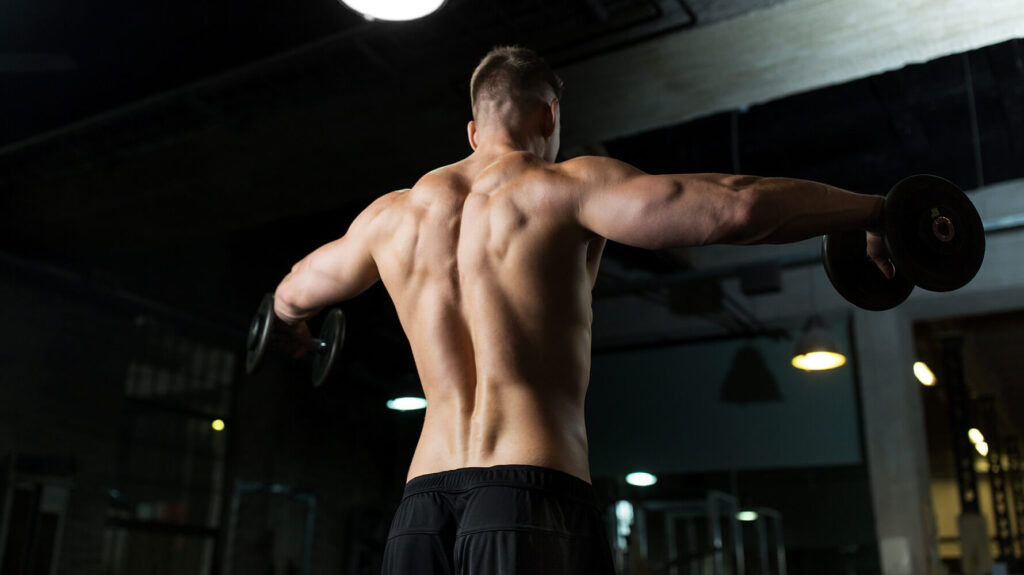
As a result, specific shoulder workouts are required to strengthen these two locations and build a strong, well-functioning deltoid muscle group. Here’s how strong deltoids can help you.
Incident Prevention
If you’ve been training for a while, you’re probably aware that one of your body’s most vulnerable areas is your shoulders. Weak shoulders that do not provide appropriate support for your shoulder joints can quickly lead to bone, joint, and muscle problems.
Shoulder exercises, in fact, have been shown to be useful in cases of rotator cuff stiffness and discomfort. By strengthening your shoulder muscles, you can avoid injuries both inside and outside of the gym.
According to research published in the International Journal of Sports Physical Therapy, individuals saw significant improvements in discomfort and range of motion after just three weeks of daily shoulder training.
Happy Mindset And Better Posture
You naturally activate your trapezius by joining your shoulder blades and doing actions that target your posterior deltoid muscles. As a result, you’ll have better posture, a stronger core, and a stronger back.
As a result, you’ll appear taller and thinner, which will boost your confidence. Indeed, according to a study published in the Journal of Cognition and Emotion, improved posture is related to a better mood, enhanced focus, and fewer negative thoughts.
So, the next time you’re feeling down, a good shoulder workout can help you get out of it, re-energize, and achieve your fitness goals.
Increase Your Learning Possibilities
Raise your hand if pull-ups are your nemesis. Deltoid muscle weakness could be to fault. When you think about it, all upper body and core workouts require your shoulder muscles, particularly your delts.
You’ll gain the natural capacity and stamina to undertake tasks you couldn’t do before if you use specific training to improve this muscle group. You may be the king of “leg day,” but strong shoulders open up a whole new world of workouts, routines, and muscles you had no idea existed.
The Challenges of Deltoid Workouts
Your shoulder joints are sensitive structures that dislike being strained. The ball of your upper arm is tenuously anchored in your shoulder socket, and it is easily removed as a result of severe training.
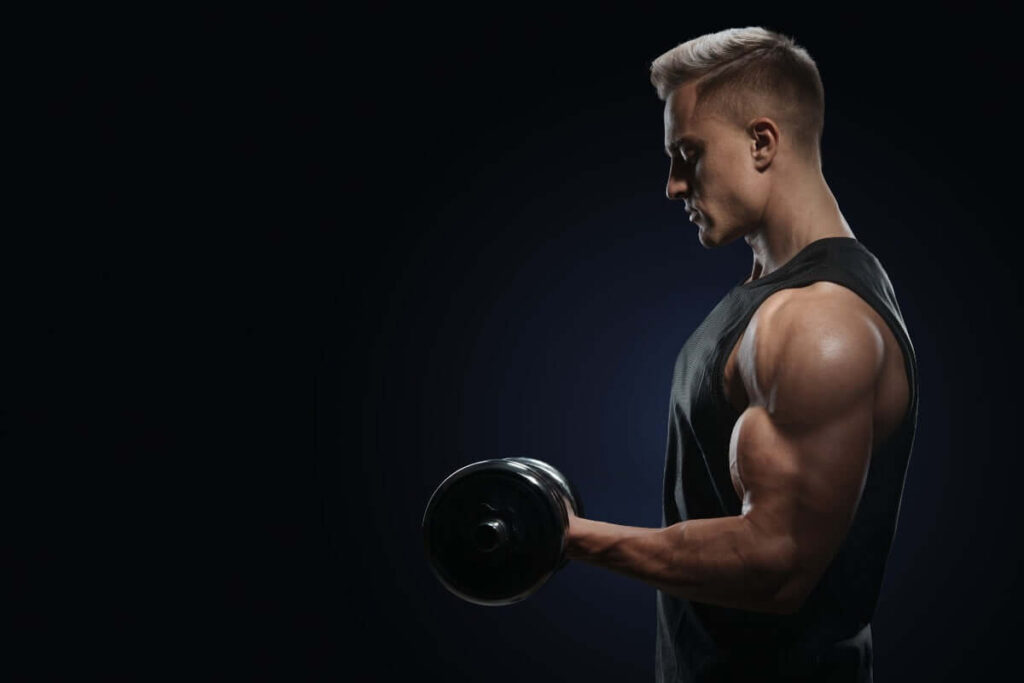
So, when working out to build these muscles, take care not to have the opposite impact. Accidents are more common than usual. It’s straightforward.
When you begin the deltoid-targeted workout, you will quickly sense fatigue and soreness. If this happens, don’t push it. Rest for a few minutes and then move to actions that target different muscle groups, especially those in the lower body.
When it comes to shoulder training, slow and steady wins the race. The good news is that, if you haven’t already, you will notice considerable increases in muscle growth and definition if you haven’t already concentrated your training on this area of your body.
Strengthen Your Upper Body and Prevent Injuries
Even if deltoids were not previously a priority in your workout programme, now is the time to reconsider. Deltoid training is the most effective way to bulk up your shoulders and achieve a V-shape.
You can be confident that you’re strengthening your body and making it more resistant to injury whether you devote a weekly session to them or merely add them into your leg day.
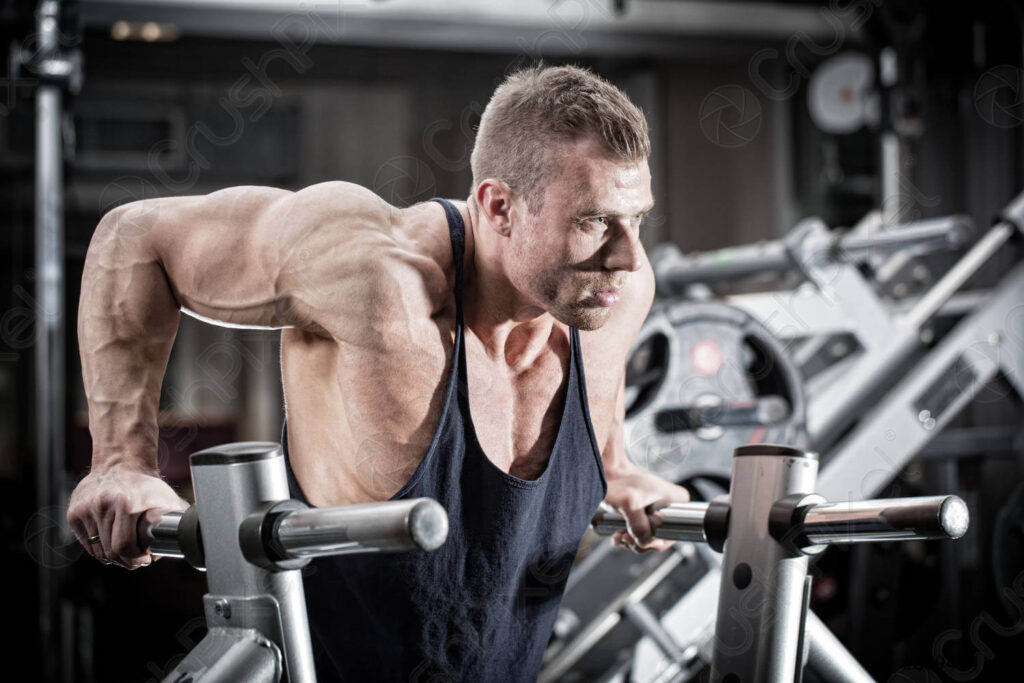
These 6 moves will help you gain rear deltoid strength and stronger shoulders overall. Try adding a couple of these exercises to your regular strength workouts each week.
Single-arm bent-over row
This move is perfect for days when your shoulders and back are working hard. Finish your back day with this multi-joint exercise to help you strengthen your posterior deltoid muscles.
A bench and dumbbells are required.
The muscles worked were the rear deltoids, back, biceps, and transverse abdominals.
How to Approach It:
- Place your left hand and knee on the bench. Keep your left elbow straight.
- Extend your right leg slightly behind you, keeping your foot on the floor for support. Maintain a neutral spine and a flat back.
- Stretch your right arm down toward the floor while holding a medium to heavy dumbbell in your right hand.
- Draw your right elbow up and back until your upper arm is almost parallel to your lower chest.
- Squeeze your shoulder blades together at the end of the exercise. Reduce the weight gradually.
- A rep for 10-12 reps on one side before switching to the opposite arm. Increase the number of sets to three.
Standing bent-over lateral raise
When performing a long-arm lateral movement, start with a lighter weight. As your strength improves, you can proceed to a heavier weight.
Starting a motion like this with heavy weight may result in harm. But don’t worry: lifting lighter weights is still a safe way to build muscle.
It is necessary to use a pair of light to medium dumbbells.
The posterior deltoids, middle deltoids, rhomboids, and middle trapezius were all exercised.
How to Approach It:
- While holding a pair of dumbbells, keep your hands facing each other.
- Stand shoulder-width apart, gently bend your knees, then bend forward at the hips while keeping your back straight. With your elbows relaxed, lay the weights together below your chest.
- Raise your arms up and out, expanding your wings, until they are parallel to the floor.
- Squeeze your shoulder blades at the end of the exercise.
- Return the weights to their initial position slowly and gently.
- Weights should be light enough for 10-12 repetitions. Increase the number of sets to 2-3.
Cable machine high pull with ropes
This technique is a great way to mix up your shoulder workouts, but it does require the use of some gym equipment. Changing the angles of your muscle exercises can enable you to target your deltoids in novel ways. This will help you acquire strength.
It is necessary to use a cable machine with a double-handled rope attachment.
Back and middle deltoids, trapezius, and rhomboids were all worked out.
How to Approach It:
- With your feet hip-width apart, face the cable machine.
- Once the cable attachment has been adjusted to roughly chest height, attach the rope handle to it.
- Step back, feet hip-width apart, and arms outstretched in front of you.
- Pull the ropes toward you while separating them. Keep your elbows up high to assist target those deltoids.
- Return your elbows to the starting position gently and carefully.
- The weight should be light enough that 10-12 repetitions are possible. Increase the number of sets to 2-3.
Rear deltoid machine
Your neighborhood gym has a machine that works the posterior deltoid muscles. This makes it very easy to isolate specific muscles in a safe and challenging manner.
It is necessary to use a rear deltoid machine.
The rhomboids, middle trapezius, and rear deltoids were all worked out.
How to Approach It:
- While sitting on the machine, face the pad. Although you may appear to be sitting on it backward, you are precisely positioned for this exercise. Set the seat height so that the handlebars in front of you are level with your shoulders.
- Hold the handles, palms down or palms facing each other, and press your arms back, keeping them straight or slightly bent.
- Squeeze your shoulder blades as if they were elevator doors.
- Hold for 2 seconds before returning to your starting posture with your hands in front of you. Take your time and be careful.
- Perform 10-12 repetitions.
Assisted pullup
Pullups are a great training action, but most people don’t have the upper body power to accomplish one without help. This exercise works the lats, trapezius, and biceps in addition to the posterior deltoids.
A pull-up machine with assistance is required.
The latissimus dorsi, deltoids, middle and lower trapezius, and biceps were all exercised.
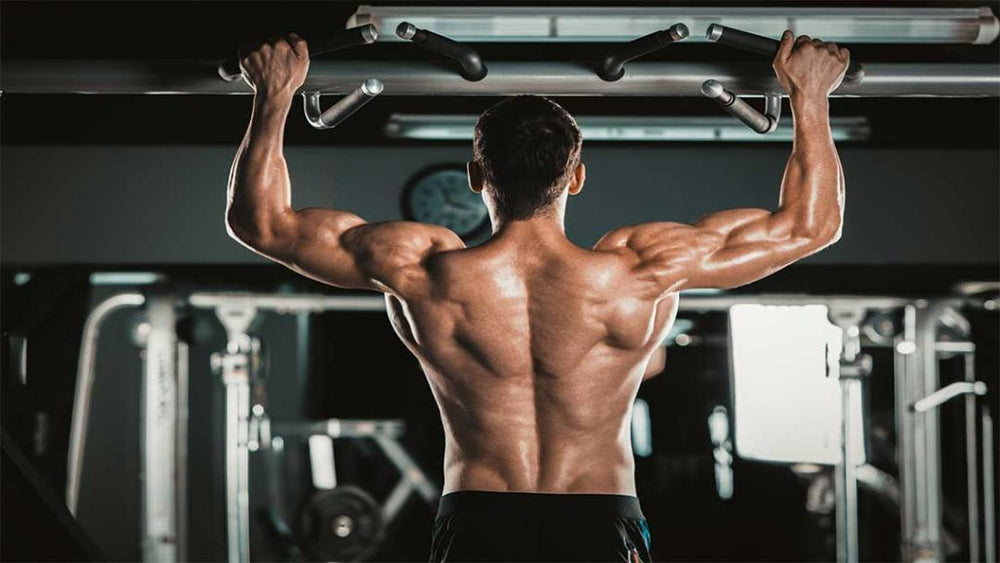
How to Approach It:
- On the machine’s side, adjust the weight deduction. Select and set the appropriate quantity.
- Climb onto the knee pad and press it down until both knees can rest on it. Your knees should be hip-width apart.
- Hold the outer handles above you with your palms facing away from the center.
- Extend your arms to return to the starting position.
- Raise your chin to the level of or above the handles.
- Hold the position for a few seconds before slowly lowering yourself. Keep your shoulder blades engaged. They must be pushed backward and downwards.
- Begin with 6-8 reps and work your way up to 10-12 reps.
Side-lying external rotation
This workout focuses on the external rotation motion of the rear deltoid. It also helps with rotator cuff muscles (infraspinatus and teres minor).
It is necessary to bring a towel and a dumbbell.
The posterior deltoid, rotator cuff, middle trapezius, and rhomboids were all exercised.
How to Approach It:
- Lie on your side and hold a light dumbbell in each hand.
- Place your upper arm on your side with your elbow bent at 90 degrees. If you have broad shoulders, place a towel roll between your upper arm and your torso.
- Rotate your arm on your chest as much as you can without allowing your upper arm to stray off your body. Hold for 1-2 seconds before returning to the starting position. Perform 10-12 repetitions.
To conclude
The posterior, or rear, delts, are important shoulder muscles that are used in a variety of pulling activities as well as shoulder stabilization. To preserve healthy shoulder mobility, it makes sense to strengthen them.
As with any workout plan, contact a healthcare professional before performing these exercises for the first time. It is also a good idea to work with a qualified trainer to verify that you are using the machines safely.
If you’re looking to grow your shoulders in a balanced way, incorporating these strategies into your routine shoulder workouts will help balance out the heavier, front-loaded movements frequently seen in other standard gym exercises.
